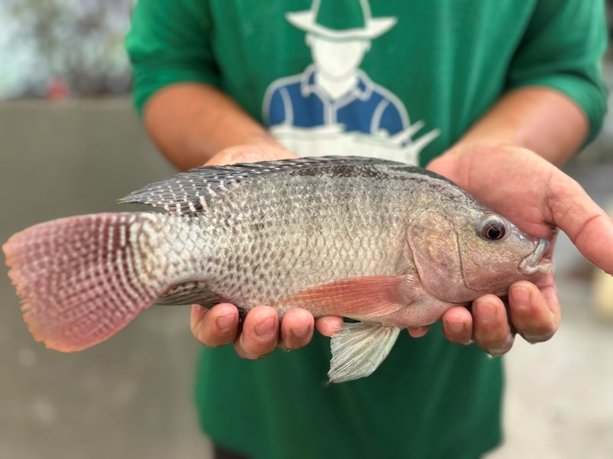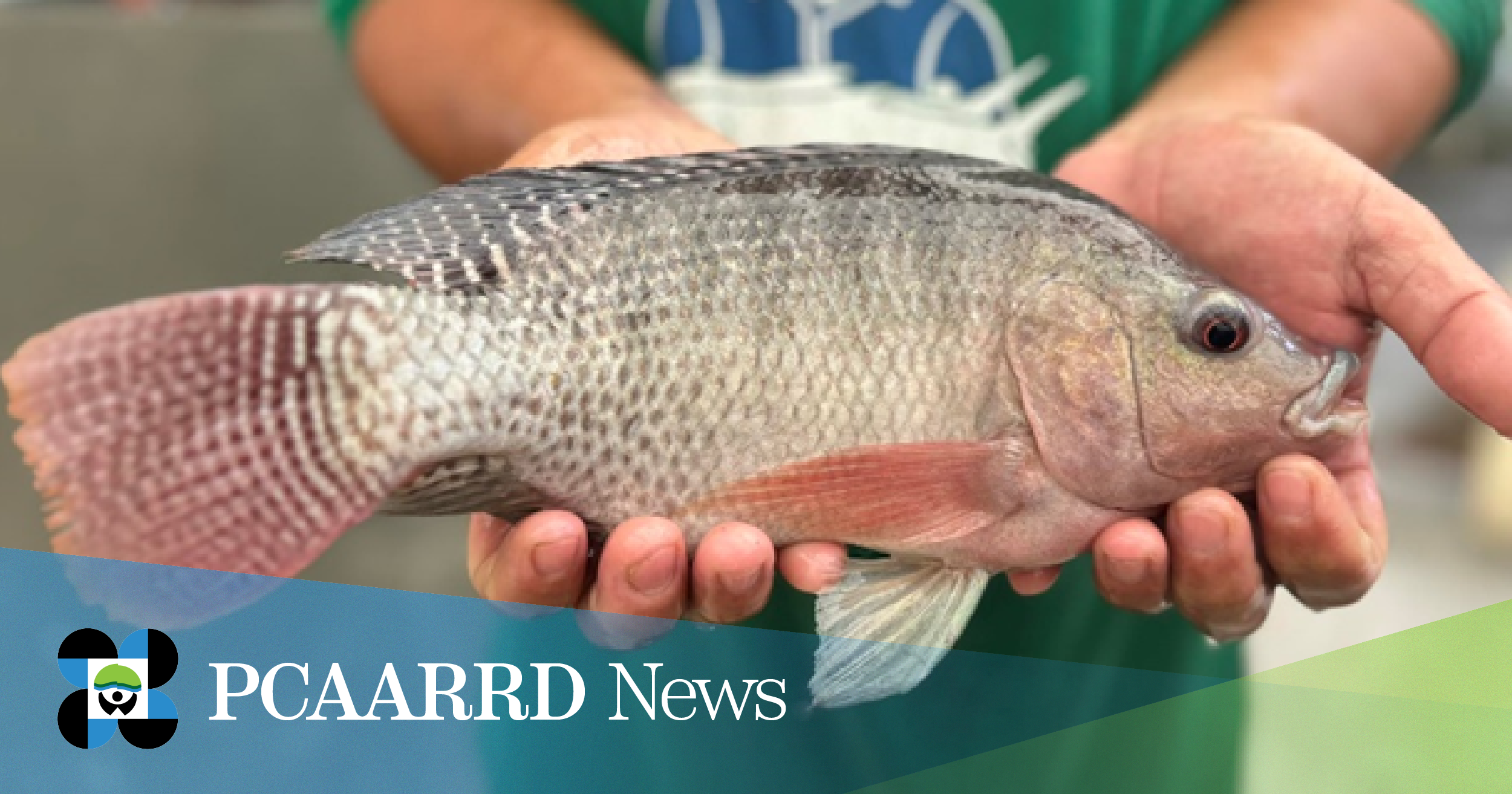Curious about the tilapia you’ve been eating?

Did you know that a tilapia strain that can extend its production in both brackishwater and estuarine environments has already been developed by Filipino researchers?
The University of the Philippines Visayas (UPV), with strong support from the Philippine Council for Agriculture, Aquatic and Natural Resources Research and Development of the Department of Science and Technology (DOST-PCAARRD), has developed the UPV-Saline-tolerant Population of Improved Nilotica (SPIN) tilapia strain. This strain was designed to thrive in brackishwater and estuarine environments to prevent mass mortalities due to saltwater intrusions, caused by the rising seawater levels, in tilapia-producing areas.
For years, tilapia has been one of the most affordable food commodities in the country and has been significantly contributing to the national economy. Moreover, tilapia is the second largest aquaculture-produced fish species in the Philippines with a total production of 281,114 metric tons valued at P24.26 billion in 2021.

However, the tilapia industry is currently exhibiting minimal or slow growth with an average annual production rate of 0.82% from 2012–2021. The declining production trend has been attributed to the congested and saturated production systems in lakes and cages. Productivity of freshwater lakes and fishponds in terms of tilapia harvests appeared to have reached its maximum capacity.
Dwindling water quality caused by mismanaged production and eutrophication of rivers and lake ecosystems are also factors linked to declining tilapia production.
To advance the industry production, tilapia farming is expected to expand towards the estuarine and brackish coastal areas. Brackishwater ponds and estuarine water cages have a high potential for the growth and expansion of tilapia farming.
Best performing Philippine Tilapia Strain

Aside from the UPV SPIN, two other saline-tolerant tilapia strains were also developed in the Philippines, the Bureau of Fisheries and Aquatic Resources-Brackishwater Enhanced Selected Tilapia (BFAR-BEST), and the BFAR-Molobicus strain.
To test the growth and production performance of these Philippine-developed saline-tolerant tilapia strains in different saline and brackishwater ecosystems, UPV is conducting an investigatory research project, “Field testing and performance evaluation of saline tolerant Philippine Tilapia strain cultured in different geographical brackishwater ecosystems,” that is funded by DOST-PCAARRD. The project aims to identify ideal Philippine saline-tolerant tilapia strains for specific brackish water and high salinity coastal and riverine ecosystems.
Research results indicate that UPV SPIN and BFAR BEST tilapia strains exhibited faster growth and high survival rate in brackishwater, high-saline pond culture systems, as well as in brackishwater estuarine earthen ponds. These strains attained the harvestable size of 250 grams in about 100 days of culture.
On the other hand, UPV SPIN showed the best growth performance in estuarine cage culture sites, compared to the two other tilapia strains.
Why the need for saline-tolerant tilapia strains?

The Philippines, being an archipelagic country, is surrounded by a wide range of brackishwater and estuarine waters. The country’s freshwater is being used not only for the culture of inland aquatic resources, but also for human household needs, consumption, and agricultural irrigation purposes. Due to the limited carrying capacity of freshwaters, and to mitigate the declining water supply for aquaculture use, tilapia aquaculture is expected to expand its production in brackishwater and estuarine waters. But this is only possible through the use of saline-tolerant strains.
This initiative hopes to significantly broaden and improve tilapia quality and production.
The UPV-SPIN used in the project was developed through selective breeding from a base population of Oreochromis niloticus to tolerate brackishwater salinity. UPV SPIN tilapia is incapable of reproduction and breeding at salinities higher than 15 parts per thousand (ppt). This inability to reproduce in higher salinities precludes the possibility of being invasive in the brackishwater and seawater ecosystems, making UPV SPIN ideal for production in estuarine brackishwater aquaculture areas. This strain was also documented to be incapable of hybridization with the Sarotherodon melanotheron, an invasive tilapia species which is commonly found in brackishwater and coastal aquatic environments.
The adoption of the UPV SPIN strain technology in brackish water cages presents a notable advantage over other marine fish being cultured. With the technology’s simplicity and cost-effectiveness in fry production, along with less technical needs in tilapia culture operations, it is highly accessible to small-scale, coastal fisherfolk. This eliminates the need for significant investments and highly skilled technicians to run the aquaculture operation, thereby ensuring economic benefits spread more widely in estuarine and coastal communities.

